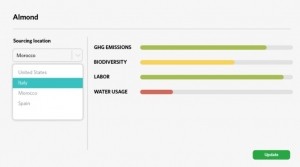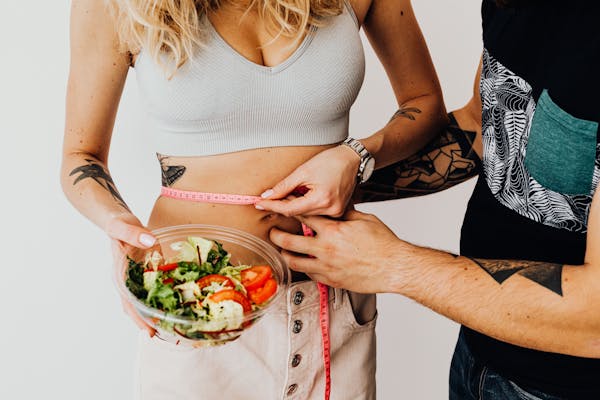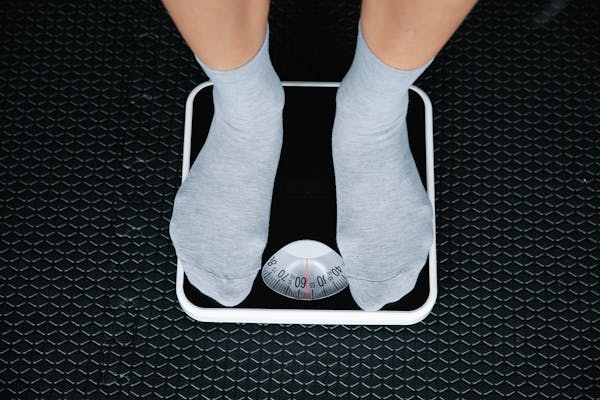[ad_1]
“You can’t deal with what you you should not measure, and you would be astonished at how several corporations nevertheless have no clue about the social or environmental impression of their solutions,” says João Brites, director of progress and innovation at HowGood – billed as ‘the world’s major food sustainability database.’
“A entire lifecycle evaluation can price tag quickly $100,000 and consider six months to finish, and a great deal of foodstuff organizations are struggling with that, specially if they make a large amount of items,” said Brites. “And that is the place our databases will come in, due to the fact it really is about earning insights about environmental affect much more accessible to foods organizations.”
‘You cannot control what you you should not measure’
So how does HowGood work, and how precise are assessments it makes about individual food products in its databases?
According to Brites: “We have spent the previous 15 many years mapping world supply units and building a substantial database that draws from more than 550 distinctive info sources to assess above 33,000 diverse substances and supplies throughout above 200 sustainability metrics for above two million client items.
“Partners that function with us together with Danone, Ingredion and Nestlé, use this information to do three points. The 1st is to measure their sustainability effect. The next is to realize how to strengthen it. And the 3rd is comprehension how to communicate this impression with integrity and in alignment with local regulatory expectations.”
GHG emissions, drinking water footprint, land use, labor possibility, biodiversity, soil health and fitness, animal welfare
He added: “For every ingredient [in a given finished product a client wants to assess], we map the top rated sourcing locations for that ingredient dependent on our international import and export databases. So if you are manufacturing in the United States and getting soy, we know the best 10 to 15 nations around the world you might be most likely sourcing that soy from, or if you’re sourcing it domestically, the top 10 to 15 states in the US that offer it. Soy from Brazil, for case in point, will come with a chance of deforestation, so we then pull information from the applicable local database, which in the US, for instance, might be the USDA LCA Commons databases.
“The providers we get the job done with explain to us the place they are sourcing their ingredients from and for every single ingredient we appear at GHG emissions, drinking water footprint, land use, labor threat, biodiversity, soil health, animal welfare and consult our databases. And then at the close we element in the share inclusions of each and every component in the formulation and occur up with an total solution rating as well as metrics on each and every area this sort of as drinking water use, land use and so on.”
A single of the most pleasing areas of the application – which Brites states is employed by product or service developers, sustainability groups and brand professionals – is the capacity to promptly evaluate the probable effect of altering an component in a formulation from crucial environmental and social impact metrics as firms produce new merchandise or reformulate existing ones, he claimed.
“As something like 80% of a product or service sustainability impression occurs at the agricultural stage, you can use the system to check out out distinct formulations and look at the sustainability impact and then consider and design a extra sustainable item.”

“Associates that perform with us such as Danone, Ingredion and Nestlé, use this facts to do three matters. The very first is to measure their sustainability effect. The second is to recognize how to enhance it. And the 3rd is knowledge how to communicate this effects with integrity and in alignment with local regulatory requirements.”
João Brites, director of progress and innovation, HowGood
‘We update our database every single quarter’
But how considerably lifecycle evaluation details is out there about meals substances, and how accurate/responsible is it?
“There is a good deal of knowledge about selected elements this kind of as soy, whereas other styles of substances can be more tough,” Brites acknowledged. “We update our database every single quarter, so if any of individuals 550 fundamental data resources alterations, we integrate people modifications into our system on a quarterly basis.”
The system works by using two varieties of data resources, he stated: “The very first just one is structured details sources, generally lifecycle assessment stock databases dependent on ISO specifications, the standards from the Greenhouse Gasoline Protocol, the Merchandise [Life Cycle Accounting and Reporting] Standard and these are generally peer reviewed intercontinental research.
“Then we have unstructured knowledge sources, things that are not in an LCA databases, but in a scientific journal this kind of as the Worldwide Journal Of Lifecycle Evaluation, the Journal of Cleaner Production, the Journal Of Industrial Ecology, along with primary data gathered by providers who have performed lifecycle analyses on their goods in accordance to internationally regarded standards.”
Sustainability statements: Professionals and cons to generalized and precise promises
So as Brites wanders all-around trade shows and supermarkets, what is he looking at on packaging?
He extra: “I was at the Organic Products and solutions Expo West show in March and I notic
ed a whole lot of unqualified sustainability promises, references to regenerative farming and eco-welcoming solutions, and I imagine that is going to deliver a large amount of authorized risk for organizations.”
That said, if providers prevent generic ‘climate-friendly’ promises and home in on particulars about sure ingredients or packaging materials that are underpinned by certifications, for illustration, this may possibly confer a ‘green’ halo around merchandise that are basically bad for the setting, he acknowledged.
For illustration, offered that the bulk of emissions in meals and beverage products will occur earlier in the cycle from agricultural emissions, Brites states he is suspicious of organizations making statements about their eco-friendly credentials primarily based exclusively on packaging, mainly because “packaging generally only accounts for about 5% of the footprint when you do a whole lifecycle evaluation.”
In the same way, if you only focus on 1 component of sustainability, you can skip the greater picture, he stated: “We simply cannot just communicate about carbon footprint, or just drinking water use, because you can make a transform that may reduce your carbon footprint, but may possibly have negative effects on biodiversity, so you require to contemplate a broad spectrum of inputs, which is why we seem at social and environmental impacts and the entire lifecycle of the product.”
Sustainability score procedure at the shelf
He additional: “From a shopper struggling with viewpoint, you can’t explain to consumers on one particular package deal, this is my water footprint, this is my carbon footprint, this is my biodiversity footprint, this is my land use footprint and so on, so we have developed a score system that’s used by End & Store and Giant outlets, ranking a product as very good, excellent, or very best.
“It’s a positive sustainability ranking procedure that compares 2 million products and solutions in our data set which we have analyzed from vendors we get the job done with this sort of as Walmart and Ahold Delhaize, so we have ingredient lists and certification information for people solutions. We also function with food stuff companies these types of as Danone and Nestlé, foodservice firms such as Chipotle, and components organizations these kinds of as Ingredion.”
*Go through the SEC proposed rule change Here.
* Read through about the Uyghur Pressured Labor Avoidance Act Right here.
* Study about the Environmentally friendly Guides Right here and the regulatory agenda to update them Listed here.
[ad_2]
Resource link







